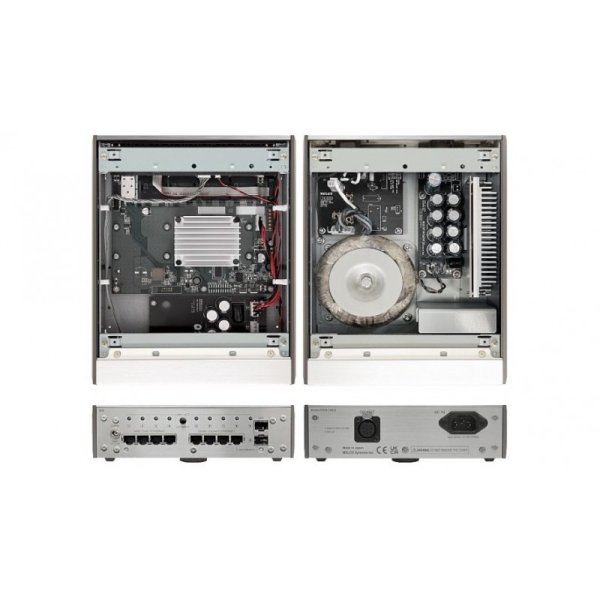Like you, I started with cheap, used Cisco Catalyst switches and then the EtherREGEN which I still have as a central hub and also the 10/100 network feed for a Meridian surround system. Ten days ago I replaced a Shunyata cable into the original Network Acoustics ENO filter with their new eno2 system for the main 2-channel setup to get an even more relaxed, natural sound through two cascaded Cisco Meraki switches fed by the ER. These were modified by Hans at AudioPhool NL and are connected by Finisar FTLX1475D3BTL transceivers and CommScope singlemode fiber.My switch story:
First my Ethernet setup: Internet providers router, 15 meter Supra cat8 to a Netgear router which distribute Ethernet to the rest of the house including a 20 meter Supra Cat8 direct to my audiophile switch.
First “audiophile” switch I bough, about 7 years ago, was a Cisco. Made a small positive difference. Bought a second Cisco when installing them in série it made a further small improvement. Then when the EtherRegen came out I bought it. Clear improvement over the Ciscos. So the Ciscos got stored away. Got a good price on an EE8. Was not as good as the ER but kept them in série. ER as the last one. Bought a Farad Super3 to feed the ER. Huge improvement.
Late 2020 I felt it was possible to make even more out of “switches”. At that time WBF spoke very well of the Melco S100 modified by Pink Faun. So went for it together with 2 Super3. It needs two. One for the switch and one for the internal PF clock. After listening I installed the S100 between my Melco NAS and the Naim streamer. As close as possible to the streamer. Sounded better there than before the Melco. An incredible improvement. My wife looked at me and said “I don’t know how much you paid but it’s worth it”. Total cost including the Farad silver dc cables was around 6000 Euro.
Then started forum members to speak of converting to fibre and reconverting back to Ethernet. So bought an ADOT and later a fourth Super3 to feed the ADOT. Thereafter I upgraded the transceivers to Finisar 1318 and the fibre cable to a glass fibre. Both upgrades, the ADOT and the second step with the Finisar transceivers gave an uplift in the sound.
Now I have Netgear -> ER -> Melco -> ADOT -> S100 PF -> Naim streamer. I think I am done for a while ……
All very convoluted steps, for a few hundreds of dollars at a time, as I tried different power supplies, grounding etc., but I feel that this latest change is the icing on a fully-baked network cake.












